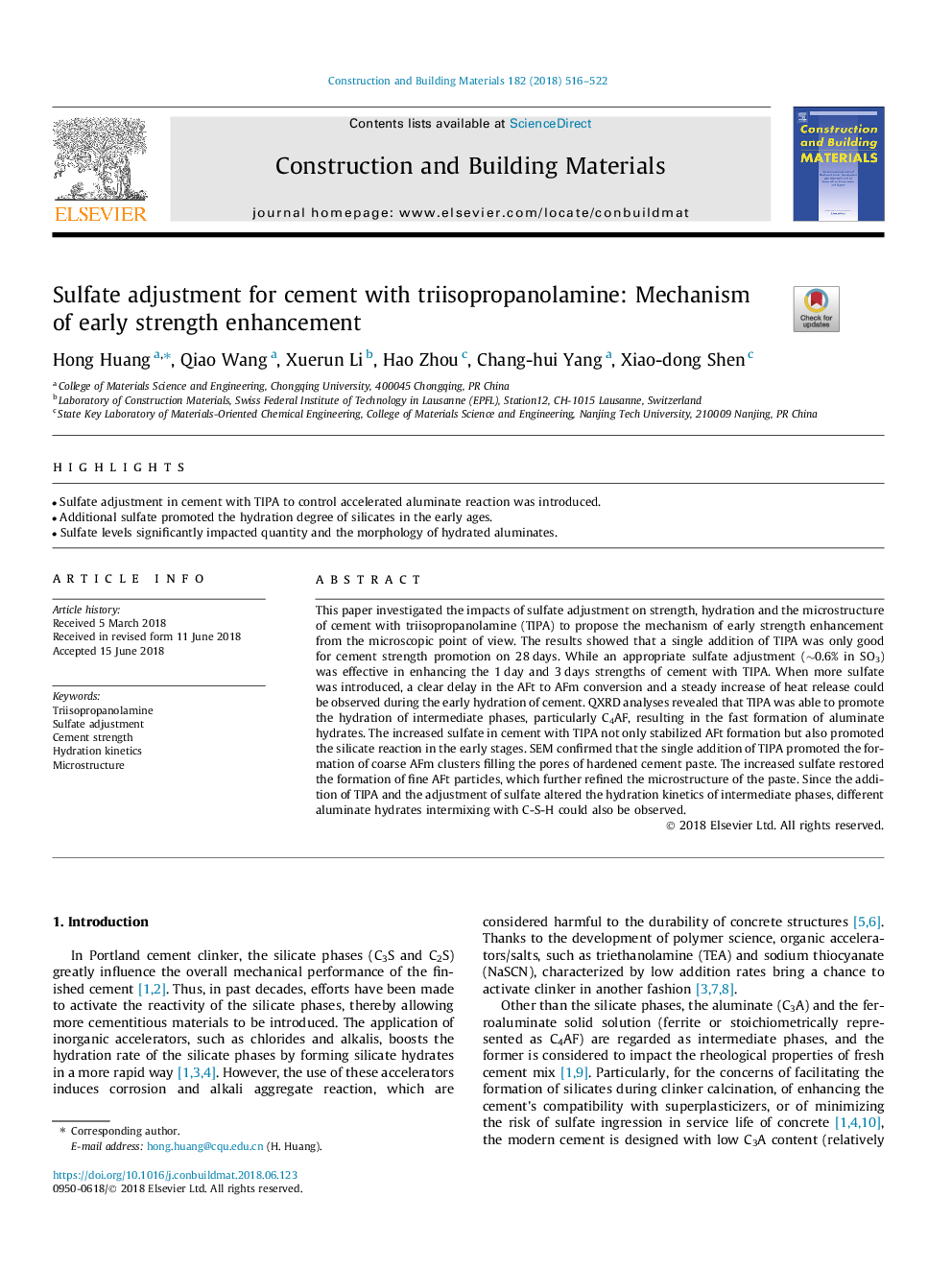| Article ID | Journal | Published Year | Pages | File Type |
|---|---|---|---|---|
| 6712266 | Construction and Building Materials | 2018 | 7 Pages |
Abstract
This paper investigated the impacts of sulfate adjustment on strength, hydration and the microstructure of cement with triisopropanolamine (TIPA) to propose the mechanism of early strength enhancement from the microscopic point of view. The results showed that a single addition of TIPA was only good for cement strength promotion on 28â¯days. While an appropriate sulfate adjustment (â¼0.6% in SO3) was effective in enhancing the 1â¯day and 3â¯days strengths of cement with TIPA. When more sulfate was introduced, a clear delay in the AFt to AFm conversion and a steady increase of heat release could be observed during the early hydration of cement. QXRD analyses revealed that TIPA was able to promote the hydration of intermediate phases, particularly C4AF, resulting in the fast formation of aluminate hydrates. The increased sulfate in cement with TIPA not only stabilized AFt formation but also promoted the silicate reaction in the early stages. SEM confirmed that the single addition of TIPA promoted the formation of coarse AFm clusters filling the pores of hardened cement paste. The increased sulfate restored the formation of fine AFt particles, which further refined the microstructure of the paste. Since the addition of TIPA and the adjustment of sulfate altered the hydration kinetics of intermediate phases, different aluminate hydrates intermixing with C-S-H could also be observed.
Related Topics
Physical Sciences and Engineering
Engineering
Civil and Structural Engineering
Authors
Hong Huang, Qiao Wang, Xuerun Li, Hao Zhou, Chang-hui Yang, Xiao-dong Shen,
